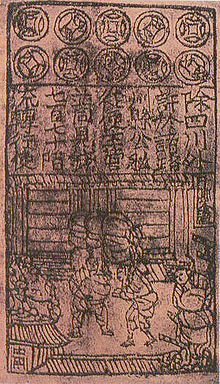
Back عملة ورقية Arabic Əsginas Azerbaijani Банкнота Bashkir Papiagöd BAR Банкнота Byelorussian Банкнота BE-X-OLD Банкнота Bulgarian ব্যাংকনোট Bengali/Bangla Bilhed-bank Breton Novčanica BS




A banknote (more commonly known as a bill in the United States and Canada) is a paper by which a bank promises to pay to the bearer on demand. Together with coins, banknotes make up the cash forms of all modern money. Coins are generally used for lower valued monetary units, and banknotes for higher values.
Originally, the value of money was determined by the value of the material the money was made of, such as silver or gold. However, carrying around a lot of precious metal was cumbersome and often dangerous. As an alternative, banknotes would be issued. In financial terms, a note is a promise to pay someone money. Banknotes were originally a promise to give an amount of precious metal to anyone who presented the paper. People could pay for things by giving the banknote, and thus the stored value (usually in gold or silver coins kept in the bank's vault) that the banknote promised.